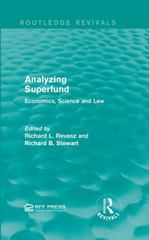Question
The budget constraint facing an individual planning his or her consumption over two periods is an intertemporal one in which the present value of consumption
The budget constraint facing an individual planning his or her consumption over two periods is an intertemporal one in which the present value of consumption expenditures must equal the present value of incomes in the two periods:
C_1+C_2/(1+r)=m_1+m_2/(1+r)..............(A)
where m and C represent income and consumption respectively and r is the interest rate, the subscripts represent the two time periods.
- Draw the intertemporal budget constraint in the C2-C1-plane. (as given in the lecture slide)
- Explain the meaning of this constraint.
- If m1 > C1, this individual is saving in period 1. Why does this imply that m2 < C2?
- If this individual is saving in period 1, why is m1 - C1 less than C2 - m2?
Now suppose the individual's utility function is given by
U(C_1,C_2)= C_1,C_2...................(B)
And m1= m2= $1000 and r = 0.1 or 10%
- Suppose individual decide to consume m1 = , or (no saving/borrowing). Calculate individual's utility at this point using the utility function given in 'B'.
- Draw the graph in the C2-C1-plane and mark the individual's optimal consumption point (C1, C2). (NOTE: at optimal point marginal rate of substitution (MRS) is equal to (1 + r). Calculate individual's utility at the optimal consumption point. Compare the individual's optimal utility with the utility obtained in part 'e'.
- Now assume that interest rate is reduced to 5%. Calculate individual's utility at the new optimal consumption point. Compare the individual's utility with the utility obtained in part 'e' and part 'f'.
- Now assume that interest rate is increased to 20%. Repeat part 'e' and part 'f'
- Now assume that inflation rate is 3%. Repeat part 'e' and part 'f'.
- Now assume that m1 = $2000, and m2 = 0, r= 0.1 (10%). Repeat part 'f'
- Now assume that m1 = 0, and m2 = $2000, r= 0.1 (10%). Repeat part 'f'
- Explain your findings.
Step by Step Solution
There are 3 Steps involved in it
Step: 1

Get Instant Access to Expert-Tailored Solutions
See step-by-step solutions with expert insights and AI powered tools for academic success
Step: 2

Step: 3

Ace Your Homework with AI
Get the answers you need in no time with our AI-driven, step-by-step assistance
Get Started


